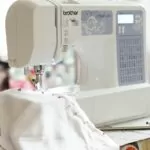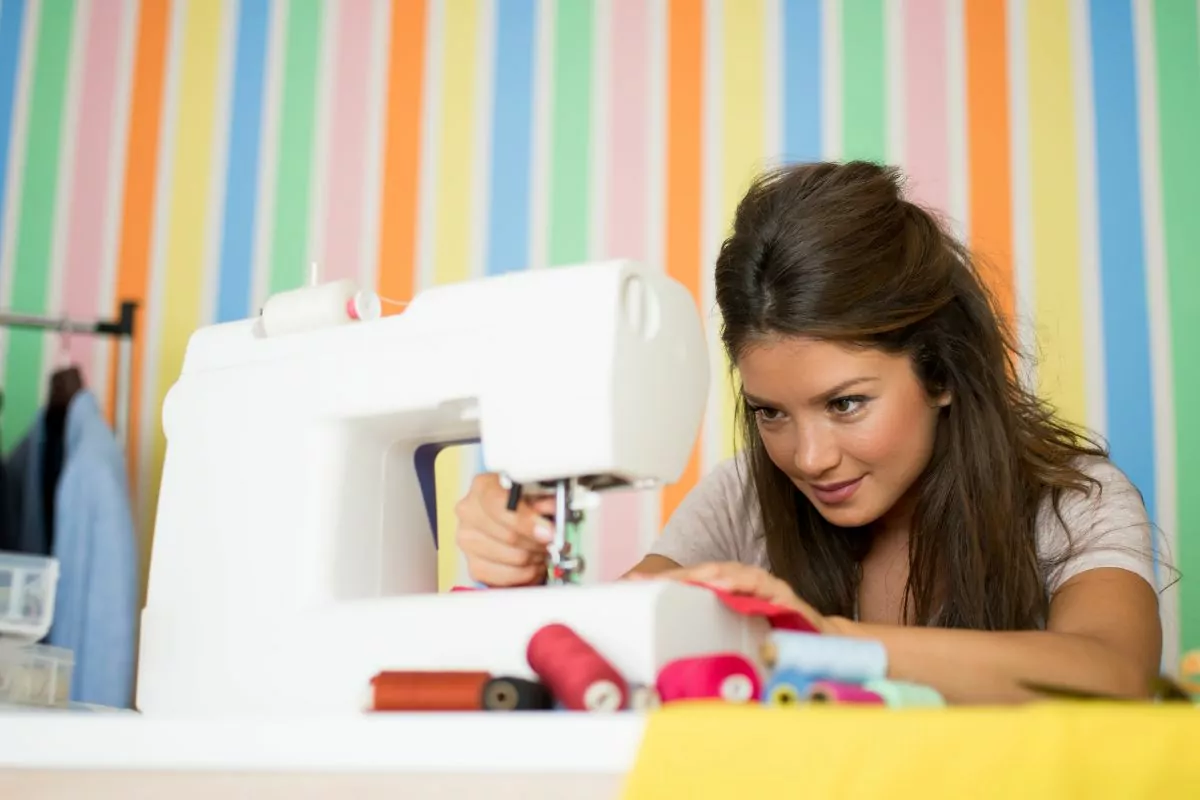Singer sewing machines have a long history of being reliable and easy to use.
They have been a staple in many households for generations, and many people may still have an old Singer machine tucked away in the attic or basement.

But how much is a Singer sewing machine worth? The answer depends on several factors, such as the model, condition, and age of the machine.
In this article, we’ll take a look at some of the factors that affect the value of a Singer sewing machine.
How Much Exactly Is A Singer Machine Worth?
When it comes to vintage Singer sewing machines, the 1960s or earlier models can be quite valuable.
If you have one of these machines that is in good, working condition, it may be worth around $100 or more.
One such model is the revered Singer 201 which was produced from 1920 to 1950. It has been praised by Singer itself as being the “best overall vintage sewing machine money can buy”.
An original machine in perfect working order sells anywhere between $300 – $500 making it a worthwhile investment for any collector or hobbyist enthusiast.
How Exactly Do You Determine The Value Of A Singer-Sewing Machine?

When it comes to determining the value of a Singer sewing machine, there are a variety of factors at play.
Age
Of all the things that make older machines valuable, few have to do with age alone.
Rather, it is the quality of the features and craftsmanship of the machine that often makes them more sought after than newer models.
Some of the most valuable machines are those made in the 1800s when manufacturing techniques were still largely primitive by today’s standards.
This includes:
- Designs like the “Turtleback” from 1856 – a small, hand-cranked machine sold for domestic use.
- Singer 12 from the 1880s – an ornately designed device with delicate gold scrollwork.
These highly intricate machines are of particular interest to vintage sewing machine collectors, who are willing to spend a great deal in order to obtain one.
Additionally, depending on condition and form factor, some models can fetch far more money than would be expected for their age alone, regardless if they have any extra bells and whistles or not.
Condition
Condition is also important in determining Singer’s sewing machine value; no matter what year it was produced in, if its exterior has been marred by scratches and dents, then it will be devalued accordingly.
The rarity of certain features or models can push up prices, so you should never assume two identical machines will have an identical market price.
Taking all these factors into consideration ensures you get a fair price for your Singer sewing machine – whether you’re buying or selling!
How Can You Date The Model of Your Sewing Machine?

Dating a Singer sewing machine model can help you determine precisely how old the machine is and how valuable it may be.
The Serial Number
The first thing to find out is the serial number, which can often easily be located on the back of the machine.
- Once you have this number, you can look it up on the Singer website to get an exact date of when the machine was manufactured.
- In some cases, this information might not be available online, but its presence on the machine is a sure sign that it dates older.
Trademark Badge
In addition to checking out the serial number, another method for dating a Singer sewing machine is by looking at its trademark badge.
- Almost all Singers have either a black model number tag or spool card located somewhere near the front or side of the machine (sometimes the back).
- This tag contains information such as the model number and manufacturing date, which will tell you precisely how old your Singer is.
- It’s also important to note that some lower-numbered models are actually older than higher-numbered ones, as manufacturers shifted manufacturing styles over time.
- Therefore, always double-check any information obtained through these methods before formulating an opinion on exactly when your Singer sewing machine was made.
What Can Increase The Value Of Your Singer?

The age of a sewing machine can significantly impact its value.
- For example, any machine that is more than 100 years old is considered antique, and any machine less than 100 years old is considered vintage.
- Antique machines tend to be sought after by collectors due to their rarity and historical significance, however, they may not be worth much if they are no longer in good working condition.
- In contrast, vintage sewing machines may be worth significantly more when in good working condition due to the fact that many people who purchase these machines intend to use them.
- It is important for buyers to bear in mind not just the age of the machine, but also its condition before making a purchase or putting it up for sale.
It’s also important to consider whether the particular Singer model you own was part of a limited production run.
These models tend to have a higher value since there aren’t many existing copies on the market.
How Can You Determine If You Should Sell Your Machine?
If you’ve got a sewing machine that’s been sitting collecting dust for some time, you might be wondering if selling it is the right decision.
Ultimately, only you can decide whether it’s worth putting your beloved machine up for sale.
- Before making any decisions, take the time to research how much your model is worth. This way you will have a better idea of what the market price for your machine is and if it’s worth going ahead selling it.
- It can be difficult to make the decision to part with a family heirloom or an antique model that holds special sentimental value.
Final Thoughts
The value of a Singer sewing machine will depend on its age, condition, model, and whether it was part of a limited production run.
To find out how much your machine is worth, consider researching the serial number and looking at the trademark badge.
If you’re still unsure how much to ask for it, look up similar models online to get an idea of what the current market prices are.
Ultimately, the decision to sell your Singer is yours, and only you can decide if it’s the right move.
Frequently Asked Questions
Is There A Long History Behind Singer?
The history of the Singer sewing machine starts with Isaac Merritt in 1851. He created the first American Singer sewing machine.
This invention had a major impact on society, as women could now find employment working within factories using sewing machines.
- How To Sew Fabrics Together - June 5, 2023
- How Many Stitches Per Inch? - June 5, 2023
- How Long Does It Take To Sew A Dress? - June 5, 2023










